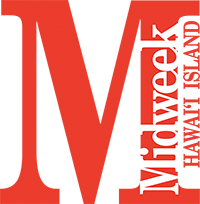A Rose By Any Other Name
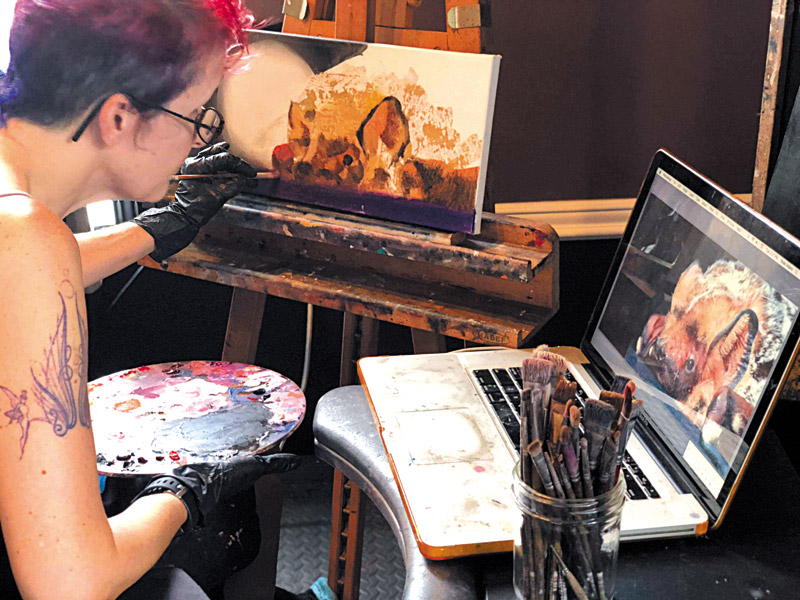
Artist Rose Adare paints Squeee, which depicts the endemic hoary bat. MATT MIYAMOTO PHOTO
Each piece that artist Rose Adare creates pulls inspiration from the people around her and showcases the beauty of their authenticity and vulnerability.
From the smallest of frames and the humblest of personalities emerges an artistic talent so profoundly forceful, skillful and luminous that words often fail observers.
At just 4-foot-10 (and three-quarters, she likes to add), artist Rose Adare is an expansive, yet petite powerhouse who has overcome severe injuries and health obstacles in her lifetime to become one of the island’s most prolific painters.
Combining strict training in classical realism with unusual and captivating subjects, the Hawaiian Paradise Park-based Adare brings alive a magic world of mystery, cultural diversity, gender celebrations, authentic human features, alternative lifestyles and keen vulnerability to her canvases — and acclaim for her talent and skill abounds.
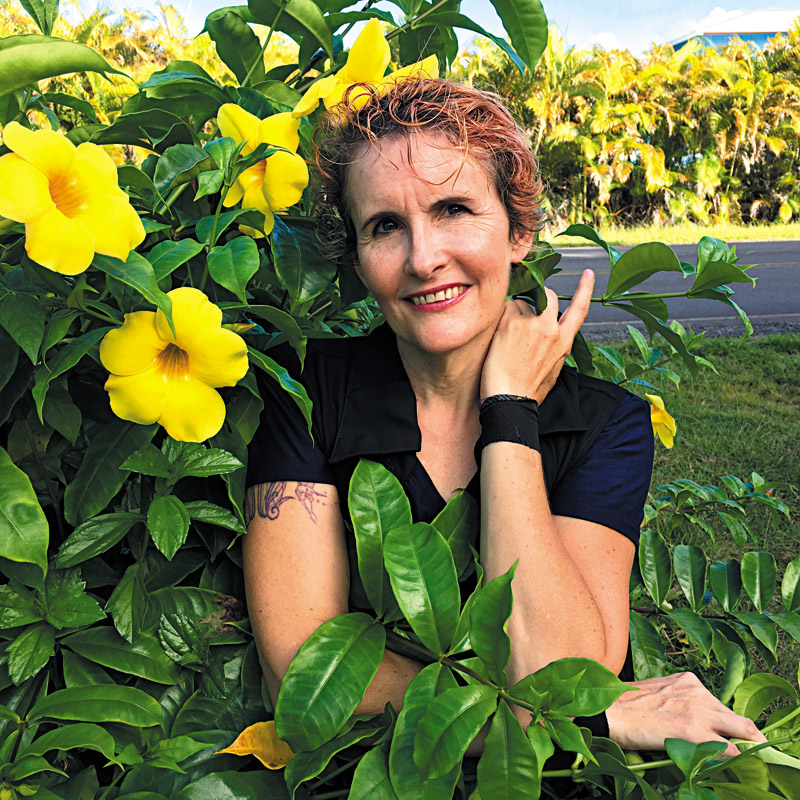
Adare stands amidst colorful foliage. NANCY DELUCREZIA PHOTO
“Rose Adare is a classical realist painter following the process of applying many translucent layers of oil paint to achieve luminosity with museum-quality proficiency,” says Renée Phillips, director of Manhattan Arts International and board member for New York Artists Equity Association. “Her large, dynamic paintings possess a robust contemporary edge and perspective. Adare’s (portrait paintings) communicate the astounding diversity of life and the arduous journey to free expression.”
Now, Adare is looking to share her gift with others in the Big Island community.
Through Kipaipai, her nonprofit art foundation and school, Adare, 49, recently opened her first artists’ atelier, a high-level, intensive workshop in which a small number of students work and learn beside a master.
“It’s a concept that has been around forever,” she explains. “Students paint or draw beside a master artist and make the same hands-on mistakes and corrections as the master. It’s foundation work that’s very common in Europe and in the tradition of the masters such as (Leonardo) da Vinci. One learns the fundamentals of proportion, measurement, sacred geometry and more. The point of the atelier is not to copy the master, but to master the fundamentals.”
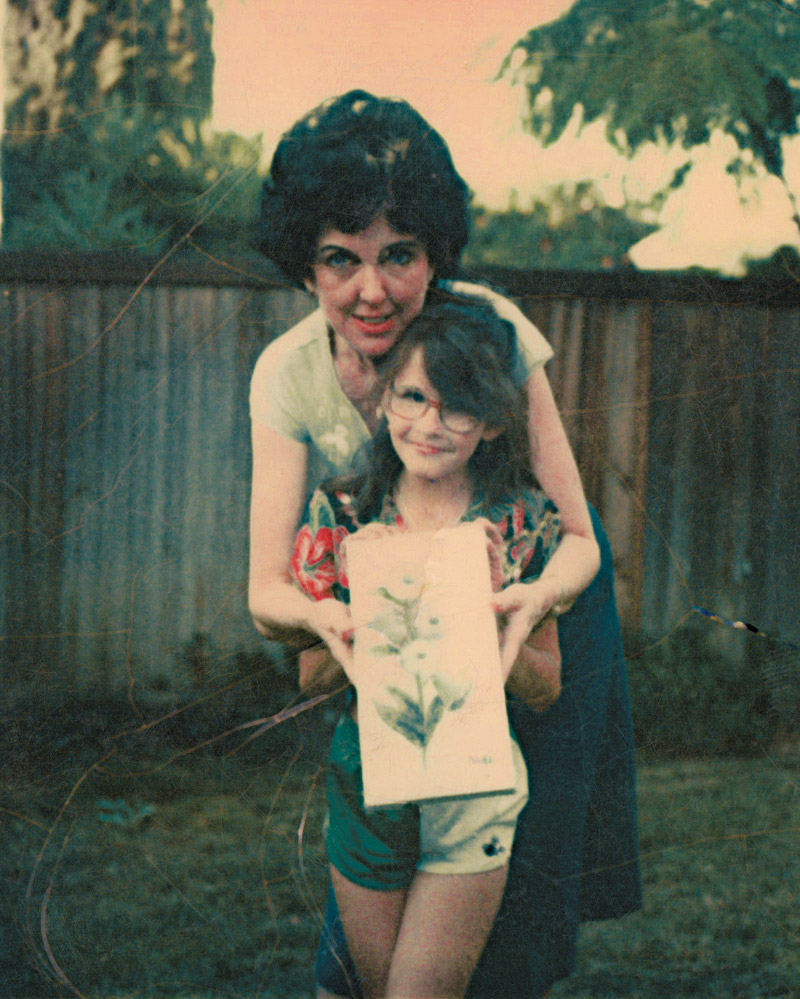
Adare, pictured at age 7, has loved art for as long as she can remember.
For example, in the first class (which does not include any painting), students learn how to use drawing tools, as well as fundamentals of sight-sizing, lighting, curved and angular surfaces, hard and soft shadows, color temperature and more.
In fact, Adare was once a classical realism atelier student in Berkeley, California, under influential mentor David Hardy, 88.
“He saw something in me and gave me a full three-year scholarship, a tradition that we pay forward today in our own atelier,” she says. “We also follow the traditions of honoring the teacher, so our space displays a photo of the esteemed Mr. Hardy.”
Originally from sleepy Fullerton, California, Adare was a self-admitted hyper-active child who proclaimed at age 7 that she wanted to “paint real in oils.”
She says her parents (mom, a homemaker, and dad, a shipping company employee) were only too glad to indulge her desires. “Probably because it was the only time I would actually sit down and shut up and give them a break,” she speculates with a laugh.
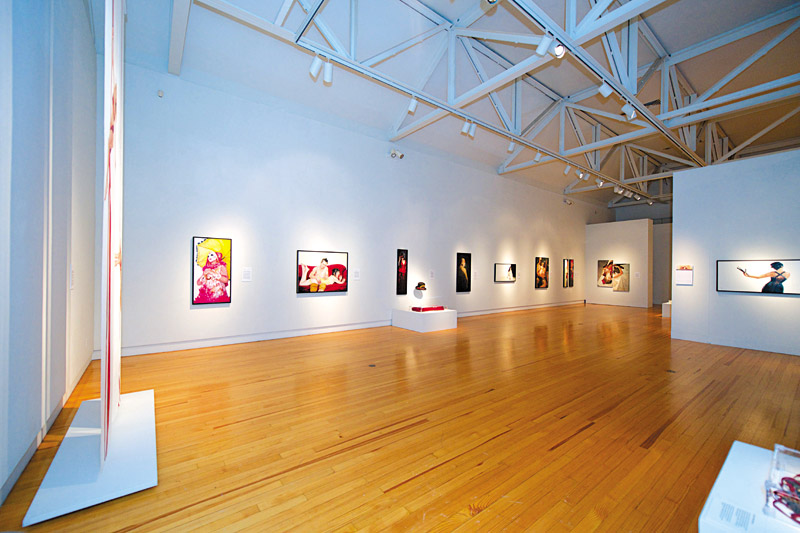
Some of Adare’s work — 20 large paintings from her Restraint & Revolution collection — was displayed at a three-woman show at Maui Arts & Cultural Center in 2014-15. PHOTOS COURTESY ROSE ADARE
“I always had art as a child,” Adare continues. “I would close my eyes and draw horses and unicorns. I did art tricks upside down. Because I bombed out at everything else, like basketball or sports, art was amazing for me to find.”
Forced to wear an eye patch through much of her childhood, Adare required numerous eye surgeries to help correct her stereo blindness (being unable to see three-dimensionally) and amblyopia. She found good company in major artists, such as Rembrandt Harmenszoon van Rijn, Mary Cassatt, Edgar Degas, Georgia O’Keeffe and Claude Monet, who all suffered eye problems during their careers.
At 28, she left for the Bay Area, where she studied at Academy of Art University, earning a bachelor’s in illustration. She expected to use those skills in animation, but still not satisfied with her drawing skills, she took Hardy’s atelier. The master painter changed her life and steered her toward a career painting and teaching classical realism.
Years later, an accident left the ligaments in both her arms damaged. Adare then headed to Kyoto, Japan, to heal and rehab her limbs. She was determined to draw again, even though doctors told her that might not ever be possible. After her return to the states, she continued creating, entering every art show she could — even in genres where she had no experience, such as abstract. To her surprise, she won accolades all around, including an honorable mention for the first abstract she’d ever painted.
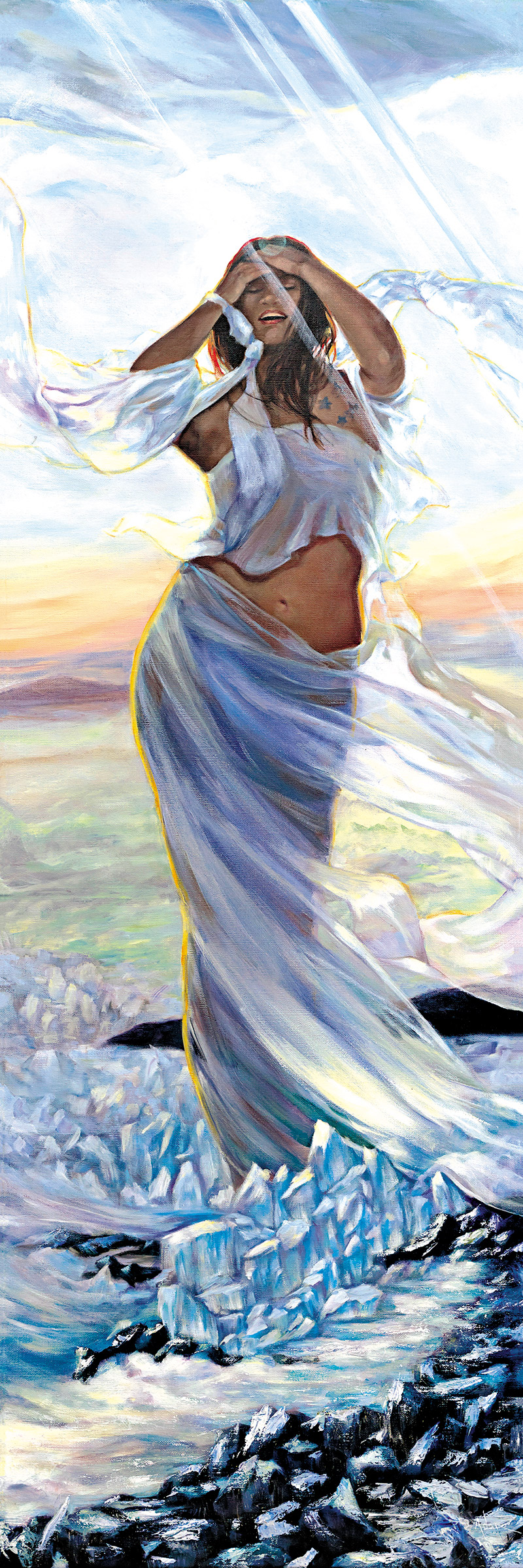
Rose Adare’s work includes collections like Mahalo Nui Loa, which consists of 16-by-40-inch oil paintings of women honoring the elements.
Since then, Adare has exhibited at Maui Arts & Cultural Center’s Schaefer Portrait Challenge (2012, 2015, 2018), and has won awards at Wyland Galleries’ Best of the West (2013) and Hawai‘i Museum of Contemporary Art (2015). Locally, she is featured in Hilo’s Dreams of Paradise Gallery, One Gallery and Banyan Gallery, Volcano Garden Arts, Hōlualoa’s Glyph Art Gallery and Donkey Mill Art Center, Maui’s Hui No‘eau Visual Arts Center, and O‘ahu’s Sunshine Arts Gallery.
In 2005, misfortune hit yet again. Adare was struck by a municipal train, which left her with some brain damage and permanently disabled. It was, she explains, an entire body dislocation.
During physical rehabilitation, she continued to draw with a pencil taped to her fingers and painted with palette knives taped to her hands. She even taught herself to paint with her hands remaining still, thus moving the whole body, which was completely immobilized in a brace.
Still unwilling to give up, Adare relocated to East Hawai‘i to pursue a warm, healthy, low-stress lifestyle — aided by the healing energy she found on the island. With the support of life partner Alex Stitt, she slowly regained her strength and abilities by 2009. (She still has bad days but says she is grateful to be able to walk up a flight of stairs and that she doesn’t need a wheelchair.)
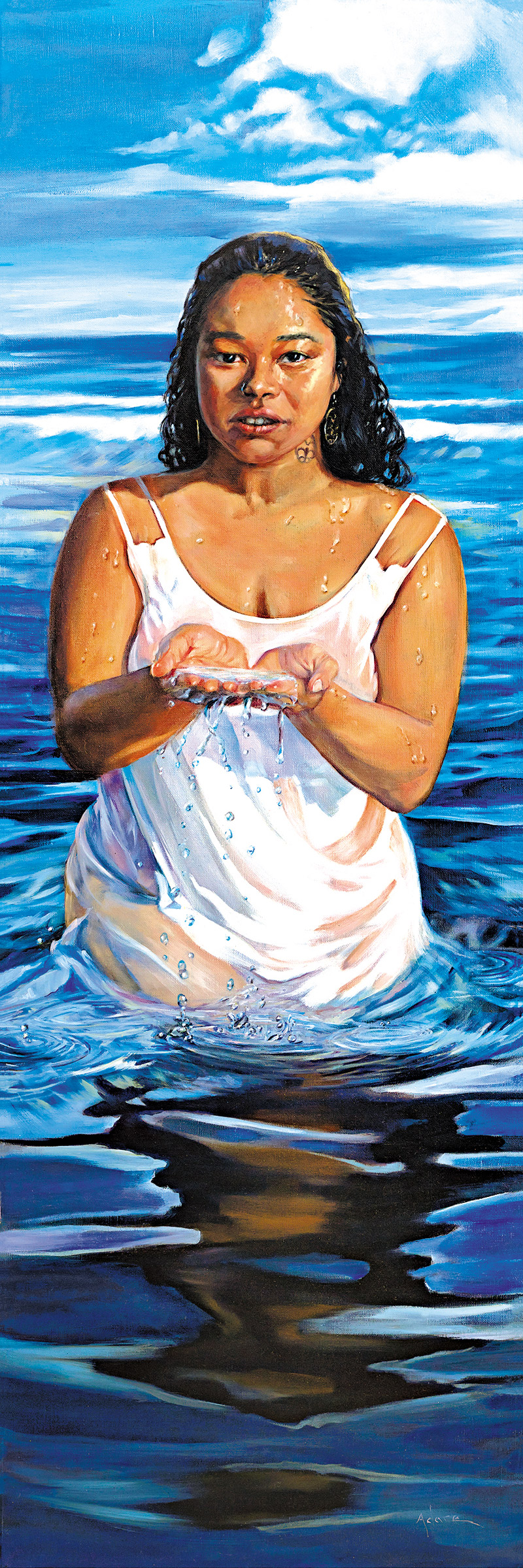
They removed the braces one by one, and Adare began a line of paintings for her Restraint & Revolution series, a collection of large canvas pieces that has since been embraced by art lovers and critics nationwide. Following that, she created a beloved series called Mahalo Nui Loa, featuring women with billowing garments interacting with the ocean, lava fields and nature.
“Paintings are reflections in time, captured, still breathing,” she muses. “These windows to another’s soul are to be examined by all, beheld by many and moved by what I can hope for within you.”
Indeed, Adare believes in authenticity so passionately that she maintains that a portrait subject without flaws makes a painting dull.
“Pretty is boring,” she says. “It’s the flaws that make you beautiful, the stretch marks, the wrinkles or the extra weight. I will say to a model who believes they have flaws: ‘I’m going to paint you as beautiful as you are.'”
Some of the highest praise for Adare comes from Hardy, who is founder, director and instructor at Atelier School of Classical Realism in Oakland.
“Rose has a vital life force in her that bubbles over into her paintings,” he says. “Never to be satisfied with cloying clichés, the originality of her artwork bursts forth with lingering impact. These creations leave one haunted with startling images and ideas, seduced into receiving from her enchanted paint brush. Am I impressed? Of course!”
It’s only natural that such an evocative artist would wax philosophic about her own work, self-expression and vision it helps her communicate to the world.
“I could not personally have done it without my teachers, who helped me create, along with my helpers such as canvas, paint and brushes,” Adare says. “It’s not always easy, but you have to allow yourself to love where you are in the process, to love what you do and acknowledge the work that you do, and know that the art you create comes from within your heart and soul.”
For more information, vsit roseadare.com and kipaipai.org.
